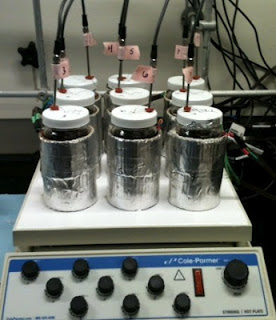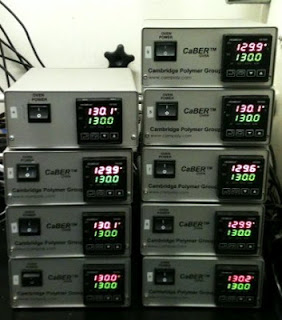Sol gel measurements
Sol gel experiments are a useful technique to determine the amount of crosslinking in a polymer. In this technique, samples are weighed carefully, immersed in a specific solvent at a specific temperature, and allowed to swell for a period of time, typically 24 hours. After this immersion period, the samples are removed again and re-weighed. The sample is then dried and re-weighed. From these weight changes, the percentage of the material that is soluble ('sol') and the crosslinked portion ('gel') can be determined. Additionally, the degree of crosslinking in the gel can be determined.
ASTM D2765 describes this technique for crosslinked polyolefins such as polyethylene. The standard calls for heating jars of xylene in an oil bath. With standard oil baths, it is very difficult to achieve a uniform temperature in both the oil bath and the sample jars within the required +/- 0.5C. Cambridge Polymer Group has modified this technique with individual heater sleeves for each jar, with isolated temperature control for each jar. With this approach, we can achieve much more precise and accurate temperature control, which results in more accurate sol/gel measurements.
 |
| CPG Sol/Gel heater sleeves and control system |
 |
| CPG sol/gel temperature control station |